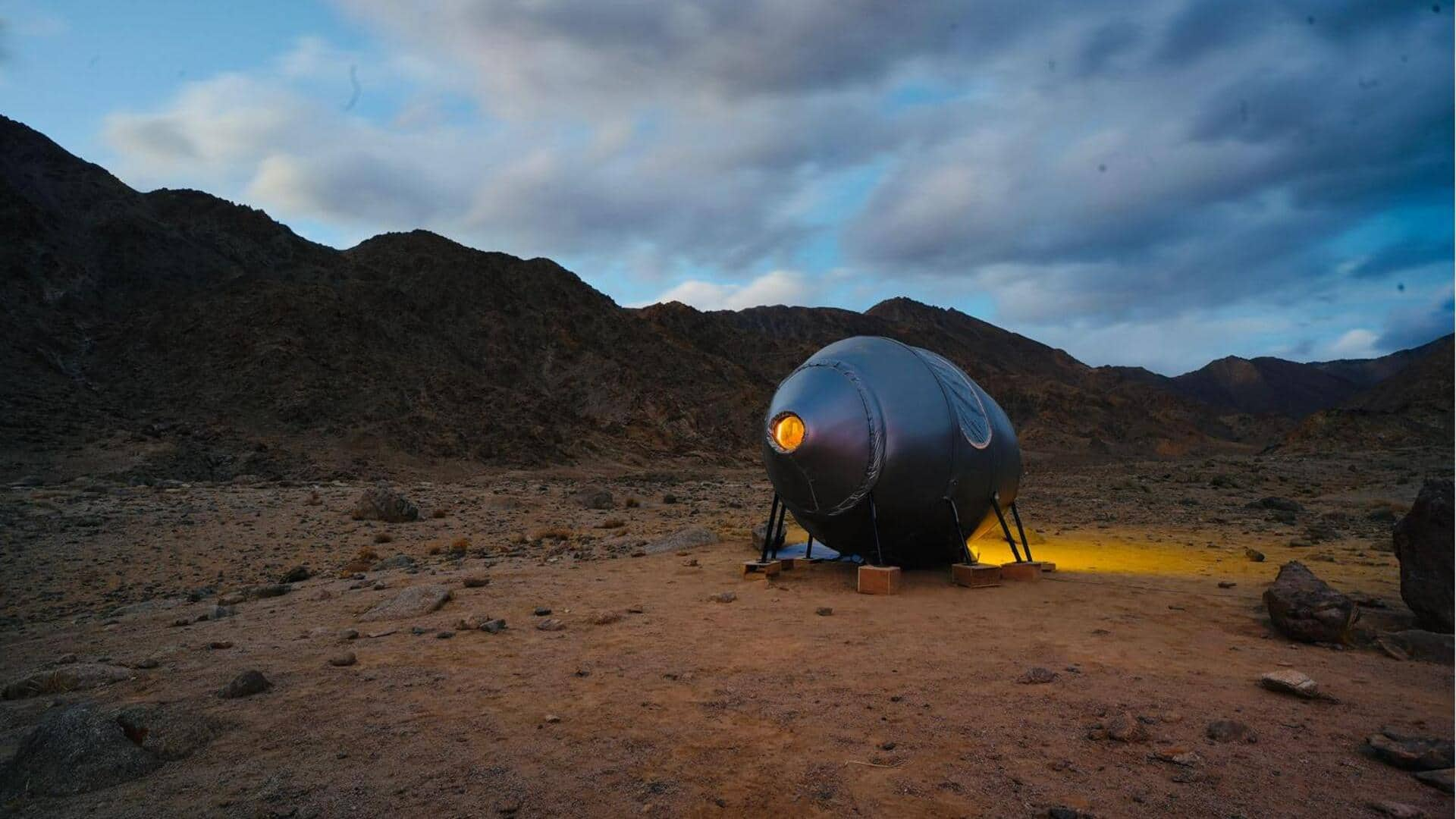
ISRO's Mars simulation mission begins in Ladakh: Know its significance
What's the story
The Indian Space Research Organisation (ISRO) has launched its first-ever "analog space mission" in Leh and Ladakh. The pioneering project, which has been developed in partnership with ISRO's Human Spaceflight Centre, University of Ladakh, IIT Bombay, and Aaka Space Studio, aims to mimic conditions of space such as isolation, confinement, and resource limitations. The mission includes a small inflatable habitat called Hab-1 that simulates environments akin to those on Mars and Moon.
Habitat details
Hab-1: A tool for studying human health in isolation
Hab-1 is a one-of-a-kind facility in India that enables scientists to study the effects of isolation and confinement on human health and performance. The habitat comes with basic amenities like a hydroponics farm, kitchen, and sanitation facilities. This self-sustaining environment yields critical data for planning long-duration space missions. Ladakh was selected as the testing site because its high-altitude, low-humidity terrain closely resembles Martian conditions.
Mission significance
Analog mission: A leap toward interplanetary exploration
"This analog mission is a significant step toward understanding the complexities of living on other planets. The insights gained will be crucial for the success of future space missions," said Sudarshan Gopinath, Rajnagar Divisional Forest Officer. The project is part of India's larger ambition to boost its human spaceflight and interplanetary exploration capabilities, including the Gaganyaan program to send Indian astronauts into space.
Mission activities
Mission activities and their impact on future space exploration
During the mission, participants will perform a range of activities to simulate life on another planet. These include habitat design evaluations, resource management studies, and psychological assessments of isolation effects on crew members. The learnings from this mission will help inform future designs of habitats for lunar and Martian environments. AAKA Space Studio, an expert in space architecture, will design sustainable habitats for human health under extraterrestrial conditions.
Twitter Post
Take a look at ISRO's post
🚀 India’s first analog space mission kicks off in Leh! 🇮🇳✨ A collaborative effort by Human Spaceflight Centre, ISRO, AAKA Space Studio, University of Ladakh, IIT Bombay, and supported by Ladakh Autonomous Hill Development Council, this mission will simulate life in an… pic.twitter.com/LoDTHzWNq8
— ISRO (@isro) November 1, 2024